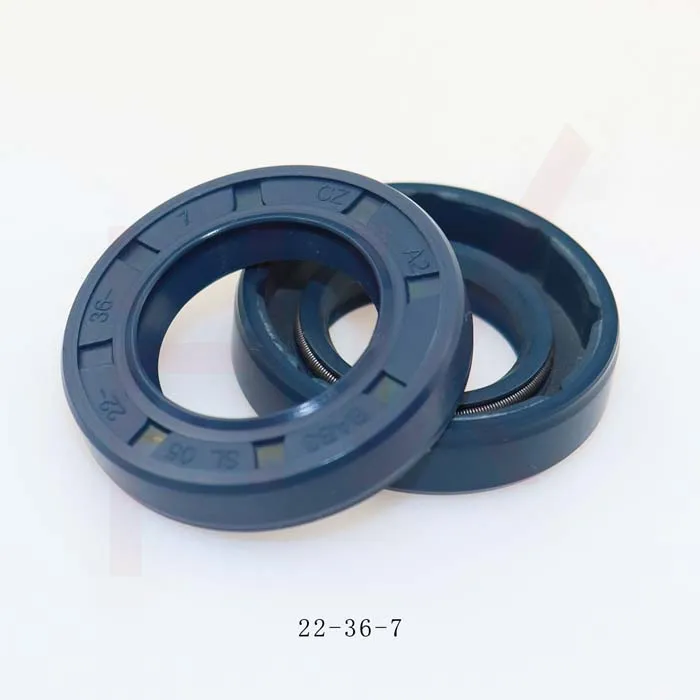Dec . 05, 2024 14:56 Back to list
seal kit hydraulic
Understanding Seal Kit Hydraulics An Essential Component in Fluid Power Systems
Hydraulic systems are integral to various industrial applications, providing the necessary force to operate machinery and equipment efficiently. At the heart of these systems lies a critical component known as the seal kit. Understanding the importance and functionality of seal kits, particularly in hydraulic systems, is vital for anyone involved in machinery maintenance, engineering, or fluid mechanics.
A seal kit typically contains a variety of seals made from different materials, designed to prevent fluid leakage and contamination within hydraulic systems. These seals play a critical role in maintaining system pressure, ensuring the longevity and efficiency of hydraulic machinery. In essence, hydraulic seal kits serve to create a barrier between fluid and external environments, preventing both loss of hydraulic fluid and the ingress of harmful substances that can lead to system failure.
Types of Seals in a Hydraulic Kit
Seal kits often include several types of seals, each serving specific functions. The most common types include O-rings, lip seals, and backup rings. O-rings are circular rings made from elastomeric materials that fit into a groove, providing a tight seal when compressed. They are versatile and commonly used in static and dynamic applications. Lip seals, on the other hand, are designed to retain lubricants while excluding dirt and moisture. These seals have a lip that presses against the shaft, creating a dynamic seal that is essential in rotating applications.
Backup rings are used alongside O-rings to prevent extrusion and damage under high pressure. These components are crucial for maintaining the integrity of the seal under varying operational conditions, ensuring the reliability of the hydraulic system.
Materials Used in Seal Kits
seal kit hydraulic

The performance of seal kits largely depends on the materials used in manufacturing the seals. Common materials include nitrile rubber (Buna-N), fluorocarbon rubber (Viton), and polyurethane. Nitrile rubber is widely used due to its excellent resistance to petroleum-based fluids and good compression set resistance. Fluorocarbon rubber is preferred in high-temperature applications, as it offers superior resistance to various chemicals and maintains its properties under extreme conditions. Polyurethane seals are known for their robustness and resistance to wear, making them ideal for demanding hydraulic applications.
Importance of Proper Seal Kit Selection
Selecting the appropriate seal kit for specific hydraulic applications is paramount. An incorrectly matched seal can result in leaks, reduced efficiency, and even catastrophic failure of the system. Factors to consider include the type of hydraulic fluid, temperature ranges, pressure levels, and environmental conditions. For instance, in high-pressure applications, seals with reinforced structures may be required to handle the stress and prevent extrusion.
Maintenance is another crucial aspect of managing hydraulic systems effectively. Regular inspection and timely replacement of seals can prevent costly downtimes and repair needs. Operators must be vigilant for signs of seal wear, such as fluid leaks or increased operational noise, which could indicate that a seal kit replacement is necessary.
Conclusion
Seal kits are indispensable components in hydraulic systems, ensuring efficiency and reliability. Understanding the types of seals, materials, and factors influencing seal selection is essential for effective maintenance and operation of hydraulic machinery. Investing time in selecting the right seal kit and conducting regular maintenance can significantly enhance the lifespan of hydraulic systems, leading to improved performance and reduced operational costs. In a world that increasingly relies on hydraulic technology, the significance of seal kits cannot be overlooked. Proper management of these components ensures that machinery runs smoothly and efficiently, ultimately contributing to the success of industrial operations.
-
TCN Oil Seal Metal Ring Reinforcement for Heavy Machinery
NewsJul.25,2025
-
Rotary Lip Seal Spring-Loaded Design for High-Speed Applications
NewsJul.25,2025
-
Hydraulic Cylinder Seals Polyurethane Material for High-Impact Jobs
NewsJul.25,2025
-
High Pressure Oil Seal Polyurethane Coating Wear Resistance
NewsJul.25,2025
-
Dust Proof Seal Double Lip Design for Construction Equipment
NewsJul.25,2025
-
Hub Seal Polyurethane Wear Resistance in Agricultural Vehicles
NewsJul.25,2025
-
The Trans-formative Journey of Wheel Hub Oil Seals
NewsJun.06,2025
Products categories
















